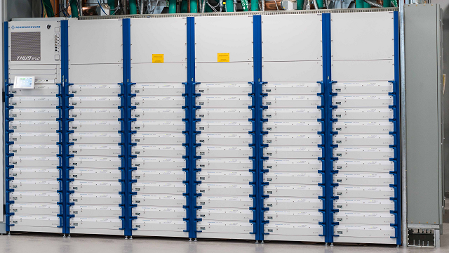Details Emerge About 1WTC Transmitter Lineup
NEW YORK—Five TV broadcasters locating at One World Trade Center in downtown Manhattan have selected the Rohde & Schwarz THU9evo digital transmitter to serve over-the-air viewers in New York City and a sixth will partner to channel share with a sister station using the transmitter, the company announced today.

In June 2017, WNJU began using an R&S THU9evo, which Rohde & Schwarz says is the largest solid-state digital transmitter in the world. It soon will be joined by WNBC, which will share the transmitter.
John Lyons, assistant VP/director of broadcast communications for The Durst Organization, which owns 1WTC in partnership with the Port Authority of New York and New Jersey, identified the stations in a previous interview. (As of this writing, Lyons has not yet responded to a request for another interview.)
Four more stations relocating to the Broadcast Center on the 90th floor of 1WTC over the next few weeks will each be using their own R&S THU9evo digital transmitter to serve New York viewers, Rohde & Schwarz said.
Read Also: 1WTC Launches OTA Broadcasts
Other stations committed to moving to 1WTC, which Lyons previously identified, include WCBS, WPXN and WNET. However, during that interview there was not a discussion of which transmitter those stations would use.

While the R&S THU9evo is a liquid-cooled transmitter, the company helped design a custom standalone liquid cooling system for the Broadcast Center to control the temperature of other equipment in the room, Rohde & Schwarz said.
Get the TV Tech Newsletter
The professional video industry's #1 source for news, trends and product and tech information. Sign up below.
The installed R&S THU9evo includes 72 PHU903 amplifiers, each with three redundant power supplies, and dual TCE901 exciters, according to Rohde & Schwarz USA transmission systems engineer/AE Glen Hurst. The installed transmitter is capable of producing 50kW of output power each for the vertical and horizontal, offering not only the benefit of signal strength to handle the challenge of covering a “concrete jungle” like New York, but also a vertical component that lends itself to reception by handheld devices in the future using ATSC 3.0, he said.
Phil Kurz is a contributing editor to TV Tech. He has written about TV and video technology for more than 30 years and served as editor of three leading industry magazines. He earned a Bachelor of Journalism and a Master’s Degree in Journalism from the University of Missouri-Columbia School of Journalism.

